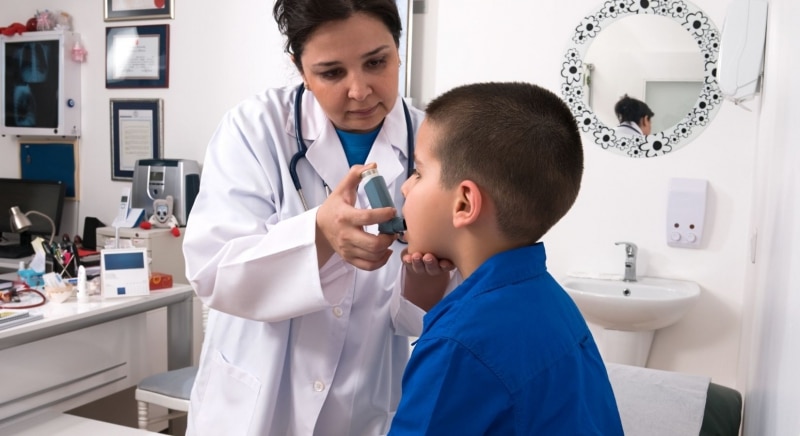
Study shows asthma-related education provided by community health workers can improve quality of life for children with asthma and reduce health care costs for their families
Asthma education program improves children’s lives, lowers household health care costs
By Kelly Tucker
One out of every 13 people in the United States has asthma. Although they are diagnosed with asthma at similar rates, children under 18 years old have a higher prevalence of asthma attacks and emergency room (ER) visits. The medical and financial burdens of living with asthma can be particularly harsh for children and families living along the Texas-Mexico border, where asthma is a leading cause of children’s hospitalizations.
A new study published in the Journal of Asthma and Allergy examined the cost-effectiveness of a community health worker-led asthma education program for parents of children with asthma. The study showed that families who participated in the program improved their knowledge of asthma, reduced daily asthma-related household costs and exposure to asthma triggers, and improved the quality of life of the children as well as their families. The research team included Genny Carrillo, MD, SCD, director of the Program on Asthma and Research Education and associate professor in the Department of Environmental and Occupational Health at the Texas A&M University School of Public Health, and colleagues from the Public Policy Research Institute at Texas A&M (Georges Naufal, PhD, Emily Naiser, PhD, and Bethany Patterson, MS) and the Center for Outcomes Research at Houston Methodist (Juha Baek, PhD).
The researchers used a curriculum accredited by the Texas Department of State Health Services that provides information on two major topics: asthma itself and how to keep homes healthy for asthma patients. Community health workers attended a four-hour workshop to learn how to administer the curriculum to the parents of children who have asthma in their homes.
A total of 349 children (ages 4 to 18) and their families from the predominately Hispanic community of McAllen, Texas, participated the study from 2016 to 2019. The community health workers collected data during a baseline visit and two follow-up visits that occurred at three months and six months post-education. During the follow-up visits, one parent or guardian served as the main survey taker and answered questions about their child’s physical health, emotional health, medical care, school attendance and activities.
Survey responses provided measurements of outcomes such as travel time to the ER, number of asthma attacks resulting in hospital and ER visits, asthma attacks per day, doctor visits, and missing days of school or work. These outcomes were used to calculate asthma-associated costs such as wages lost due to missing a workday to stay home with a child experiencing an asthma episode.
After participating in the program, the parents reported improvements in their children’s physical and emotional health as well as their activities. In addition, similar improvements in health were reported for the whole family.
The education program cost about $250 for each participating household and saved each of those households an average of $36 per day. The cost of the program was covered through a grant funded by the Texas Legislature and was allocated yearly, with each cohort participating for one year. This average considered cost savings for hospital stays, ER visits, travel time to the ER, medication, and lost wages caused by staying home with children having asthma episodes. The average cost per outcome improvement was approximately $4 for asthma attacks, $21 for ER visits, and $82 for hospital visits.
Households with an annual income of less than $15,000 seem to benefit the most from the program, as do households with less-educated parents or guardians. Children under 12 and guardians aged between 31 and 40 years were the age groups that experienced the most benefit. The researchers noted that they used conservative estimates in their cost analysis, and additional research should be done to further explore and refine the benefits and cost savings of the program.
The findings of this study contribute to a growing body of knowledge on how to effectively treat asthma in children in different populations and using different methods. Children under the age of 12 from low-income families, in particular, benefitted from the program, suggesting that it could improve quality of life for children as well as their families, save money for households on a daily basis, and reduce health disparities in similar communities.

